7 Types of Power Tools For Cutting Wood and When To Use Them

A power tool is a tool that is operated by a source of power and an additional mechanism. They’re used for cutting, drilling, driving, sanding, and more. There are so many types of power tools out there; it can get confusing and difficult to remember what each kind of saw does. Today, we’ll be focusing on seven saws and what they’re used for. Keep reading to discover Seven Types of Power Tools For Cutting Wood and When To Use Them!
If you are looking for great tools for your shop find wood tools at Amazon and have them shipped in just a few days.
Table Saw
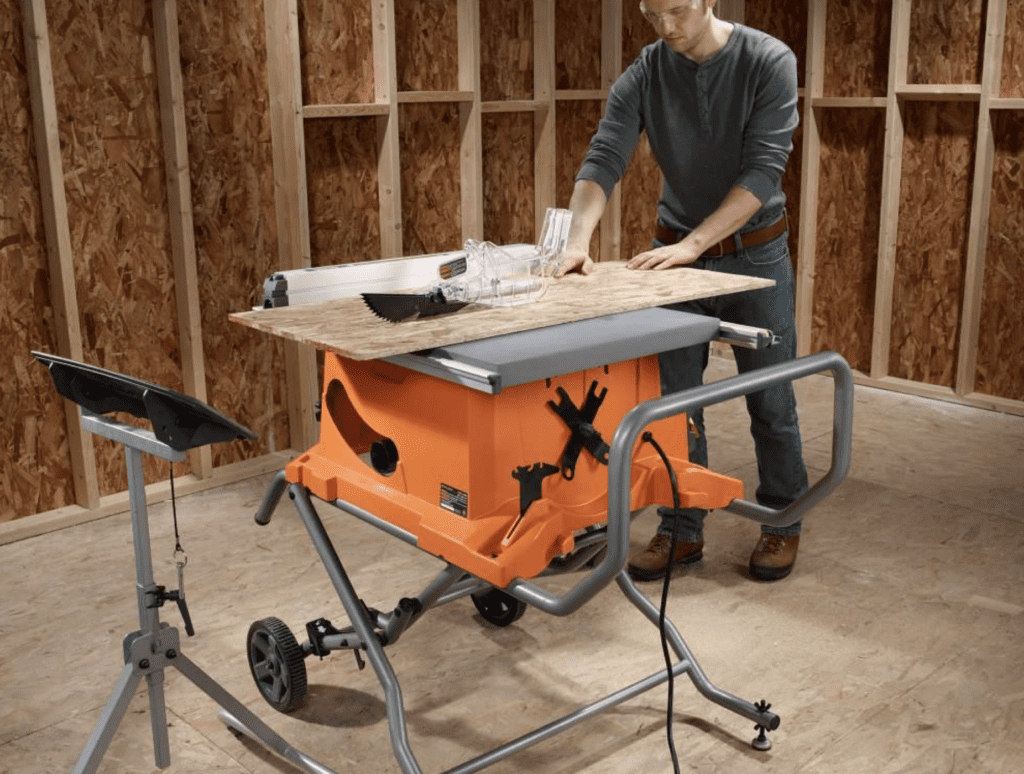
Table saws are an extremely popular power tool; both professionals and DIYers use them. One of the best and is widely used is the Jet Table Saw. A table saw is a woodworking tool with a circular saw blade mounted onto an arbor, powered by an electric motor. The circular saw blade partially sticks out through the top of a table. Table saws are great because you can customize it for specific jobs you’re working on. For example, you can change out the blades on your table saw to accommodate particular materials. Table saws are mostly used in the woodworking industry because they can cut wood, plywood, fiberboard, plastic, and aluminum.
When should you use a table saw?
You should use a table saw if you need to make different types of cuts. Some cuts include ripping wide boards, crosscut, and cutting at an angle.
Circular Saw
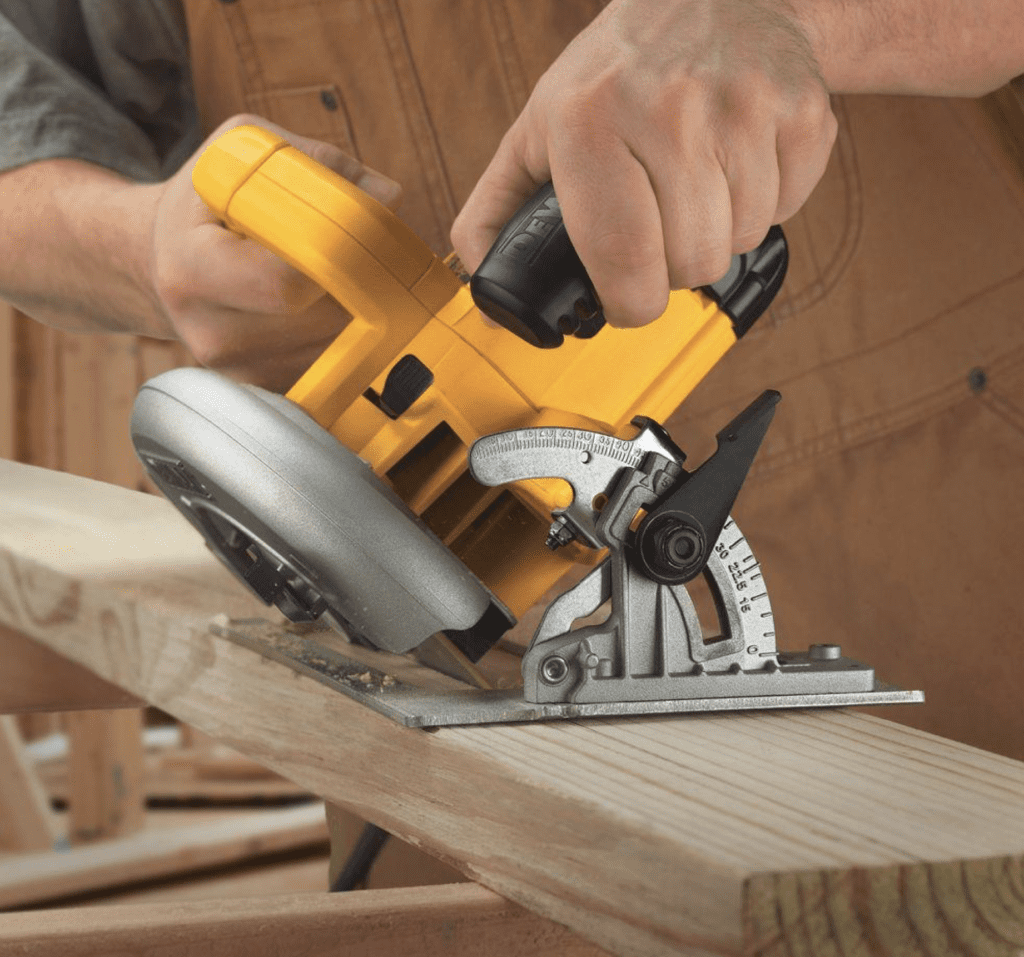
Like table saws, circular saws are a popular power tool used by both professionals and DIYers. A circular saw is a handheld power tool that uses a toothed blade that is pushed across different materials to cut them. Circular saws are great because it is a very versatile tool that is very portable. Circular saws are mostly used in the woodworking industry and are used to cut softer materials like wood and plastic.
When should you use a circular saw?
Circular saws are great for making straight, clean cuts in wood, sheet goods, roofing, and more. If you need straight cuts and portability, then a circular saw is the way to go.
Miter Saw
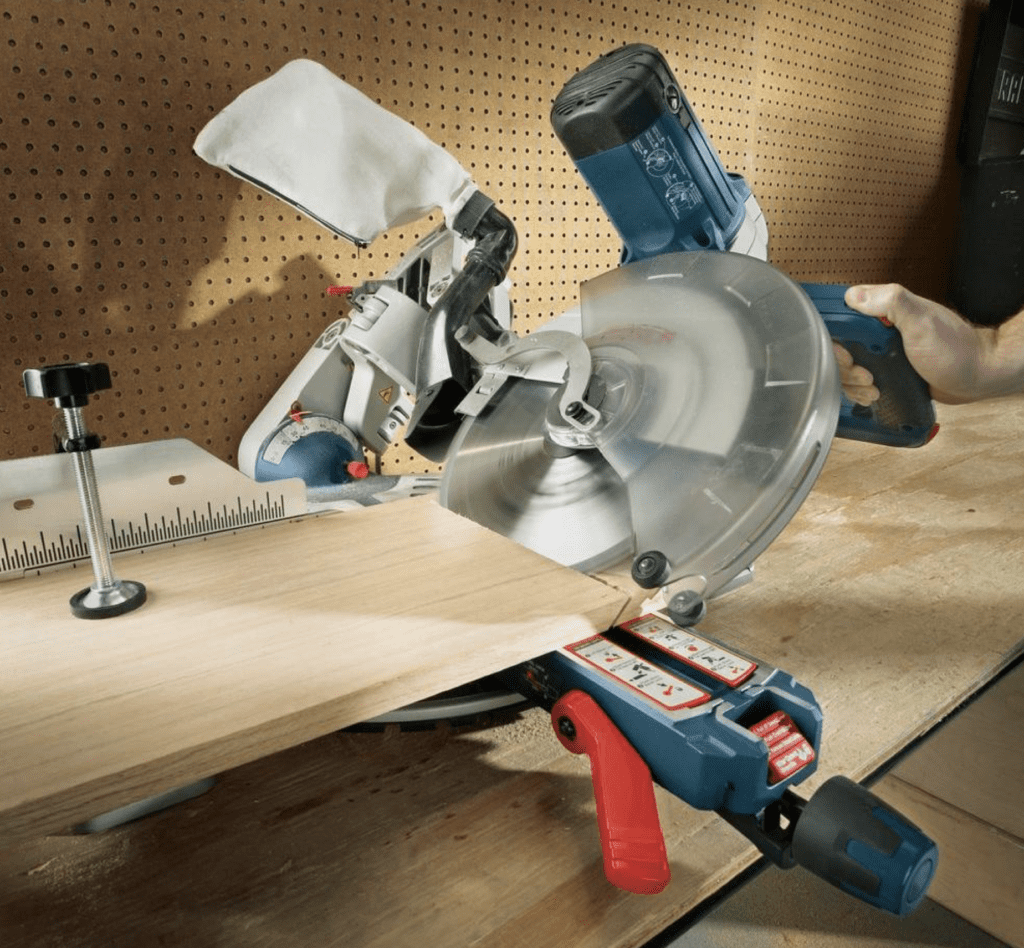
Miter saws are an extremely popular power tool; both professionals and DIYers use them. A table saw is a woodworking tool that has a circular saw blade, mounted onto an arbor, and an electric motor powers that. The circular saw blade partially sticks out through the top of a table. Table saws are great because you can customize it for specific jobs you’re working on. For example, you can change out the blades on your table saw to accommodate particular materials. Miter saws can make crosscuts, miter cuts, bevels, and compound cuts on wood, plastic, plywood, and other soft materials.
When should you use a miter saw?
You should use a miter saw if you need to make angular cuts. If you’re working on intricate woodwork projects like cabinets or furniture, you’ll want to use a miter saw as well.
Chainsaw
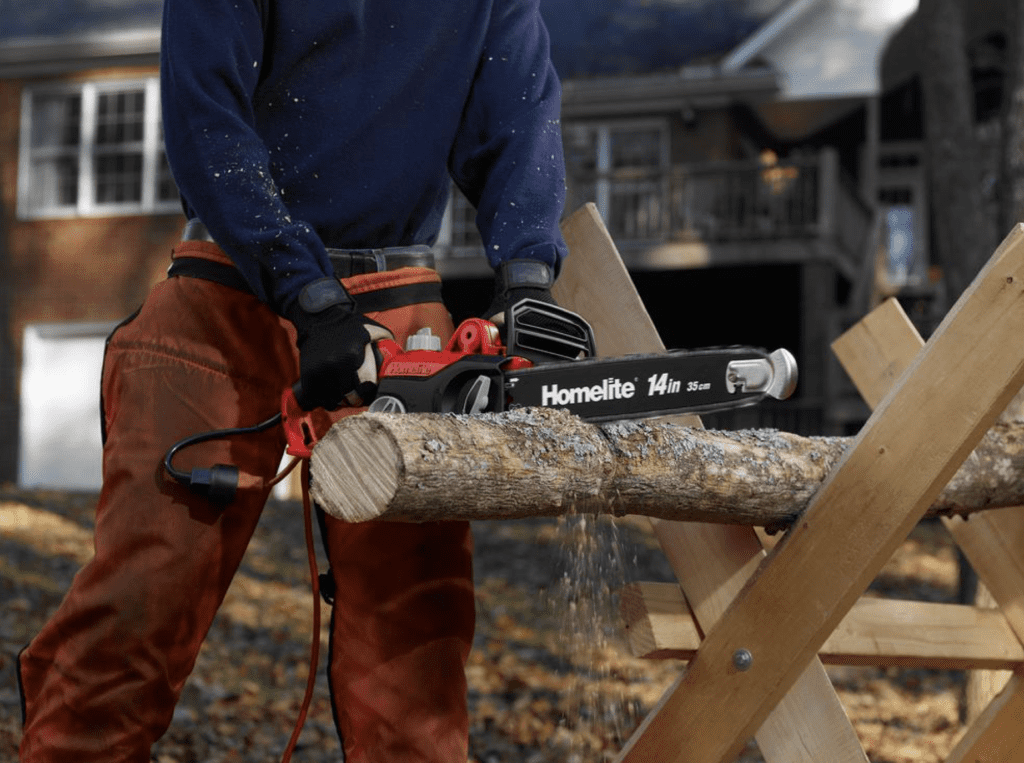
A chainsaw is a mechanical saw that cuts a variety of material, primarily wood, with a set of teeth attached to a rotating chain that runs along a guide bar. Chainsaws are not accurate when it comes to making cuts, but they’re great for anyone who needs to cut large amounts of wood in a short period of time.
When should you use a chainsaw?
You should use a chainsaw if you need to do any of these three tasks: limbing, bucking, or felling. Limbing is the process of removing branches from a downed tree. Bucking is cutting the trunk of a downed tree and felling is cutting down a tree. If you have extra wood you are going to need the best axe for splitting wood.
Reciprocating Saw
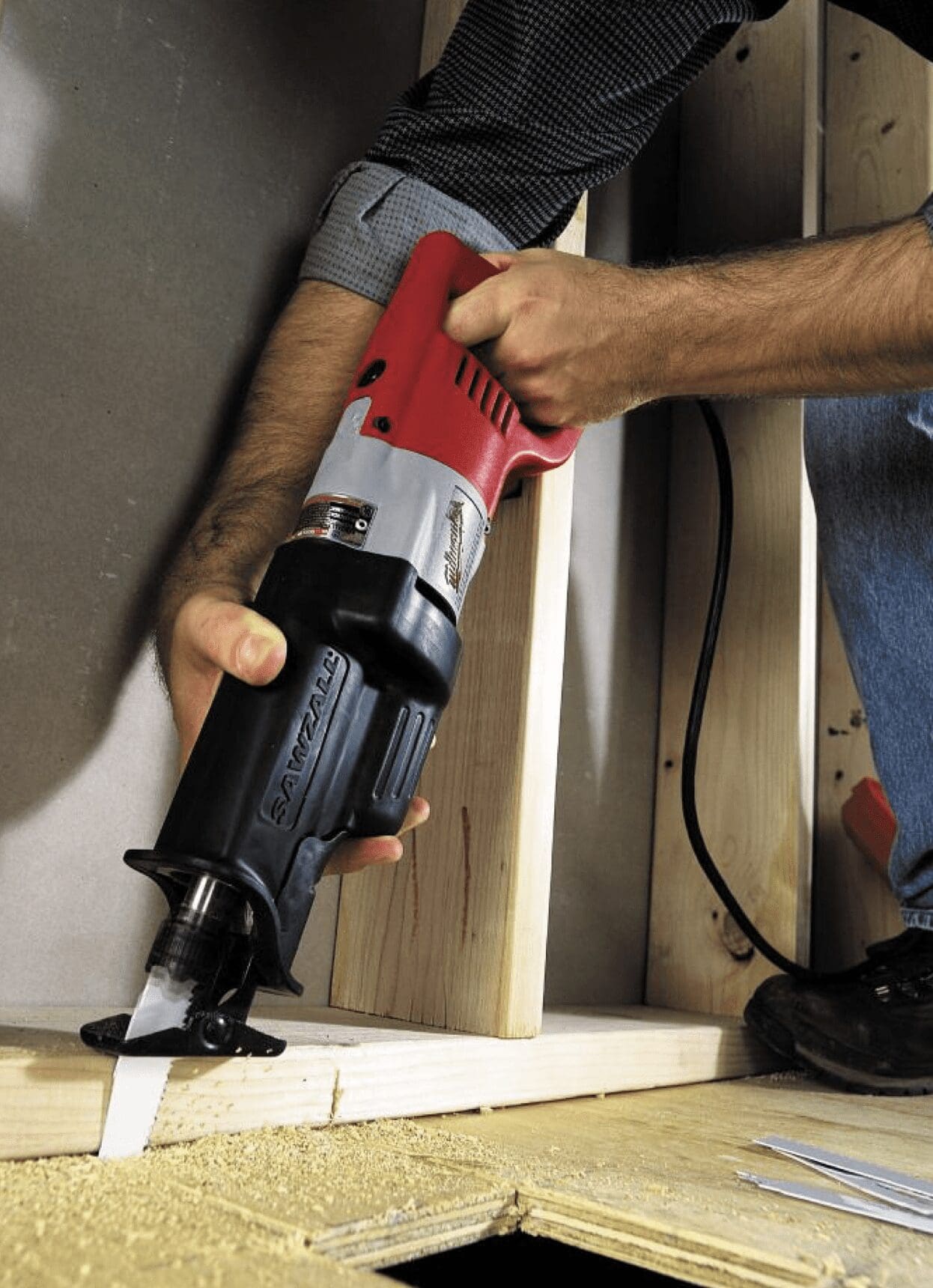
A reciprocating saw is a power saw that cuts material with a push-and-pull motion of the blade, this motion produces a sawing motion that cuts through materials. Reciprocating saws are great because if you need to cut a variety of materials, all you need to do is switch out the blade.
When should you use a reciprocating saw?
You should use a reciprocating saw if you need to prune trees, cut wood with nails, or complete any demolition or remodeling projects. We use ours to break down deer and work on house projects, our reciprocating saw is always a part of our life.
Jigsaw
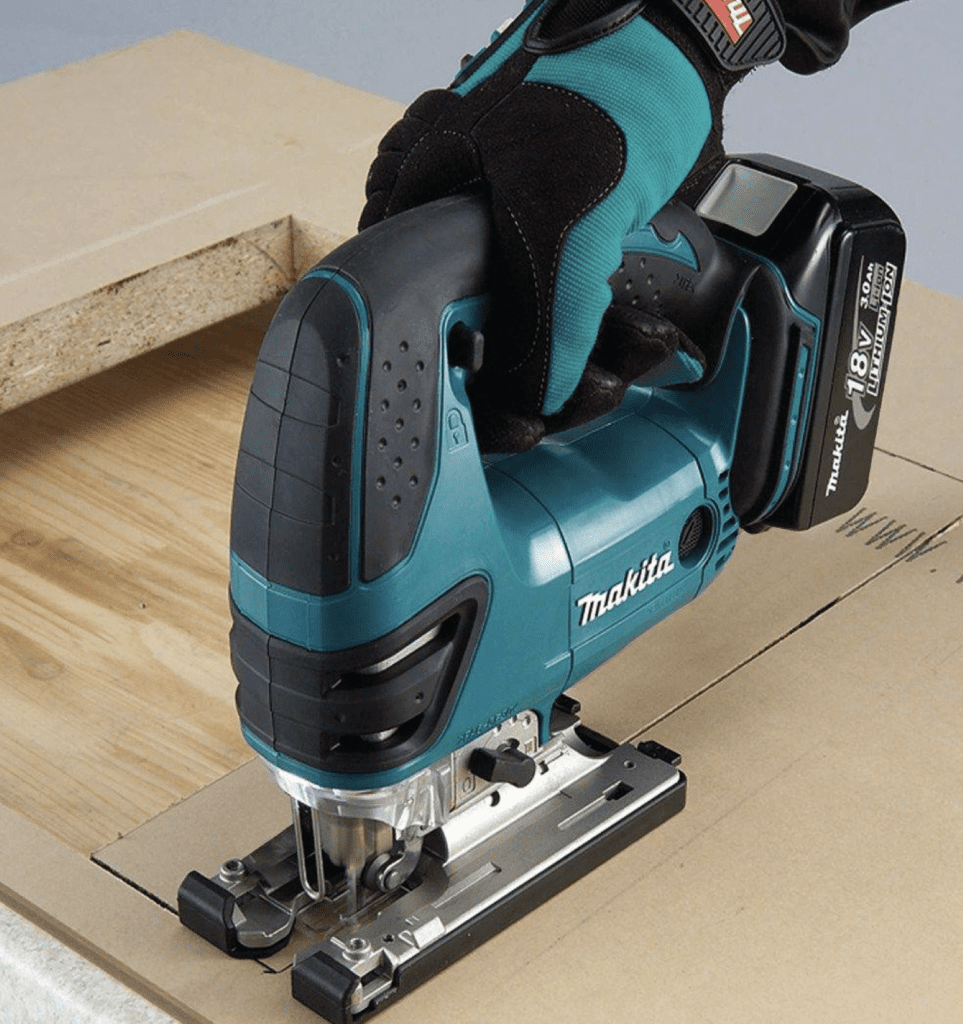
Jigsaws are very similar to reciprocating saws. However, there are two main differences. The blade on a jigsaw protrudes from the bottom of the tool, unlike a reciprocating saw with a blade that juts out from the nose of the saw. Also, jigsaws are specifically made to make curved cuts. Even though this tool was made to make curved cuts, it can be used to make straight cuts as well.
When should you use a jigsaw?
You should use a jigsaw if you need a portable, precise tool that makes both straight and curved cuts.
Band Saw
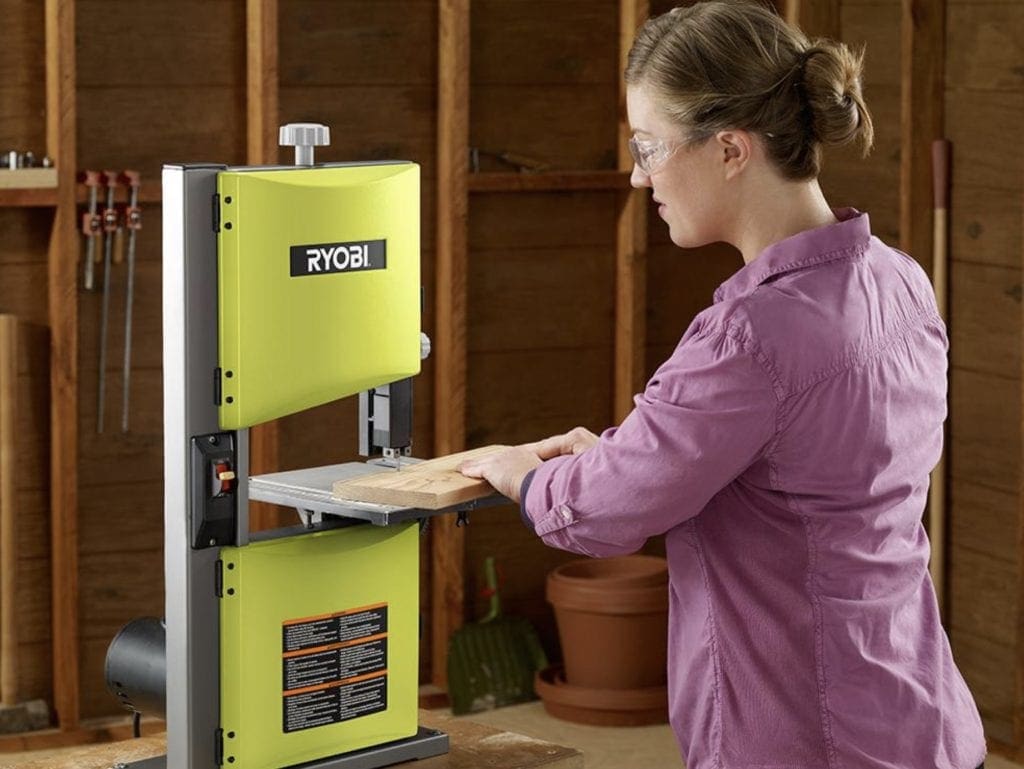
A band saw is a power saw with a band of metal that is moved through two wheels to create cutting power. There are two different types of band saws, vertical and horizontal. Vertical band saws are the most popular option for woodworking due to their ability to do crosscuts, miter cuts with miter gauges, and ripping through long lumber. Horizontal band saws are used for metalworking.
When should you use a band saw?
You should use a band saw if you need to rip through long pieces of lumber or resaw.
Best Axes for Cutting Wood
Quality axes are tools that are just as important as power tools. Having the ability to have a quality ax has kept more than one man alive and you cannot say that about most power tools.
Conclusion
There are 7 Types of Power Tools For Cutting Wood and When To Use Them! We hope this article helped clear up any confusion you may have.
If you’re a beginner woodworker who doesn’t have much experience with power tools, please be sure that you do your research on the tools you will be using. Power tools are easy to use and make creating projects a smooth process, but they can be dangerous if they’re not used properly. Be sure to review the owner’s manual that came with the power tool.
